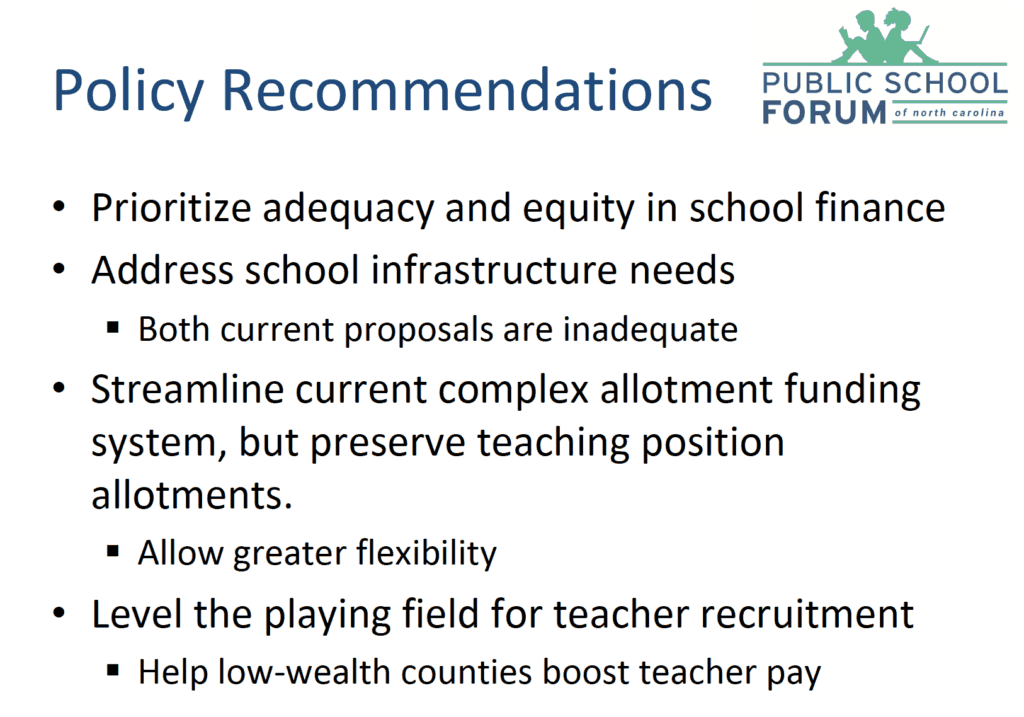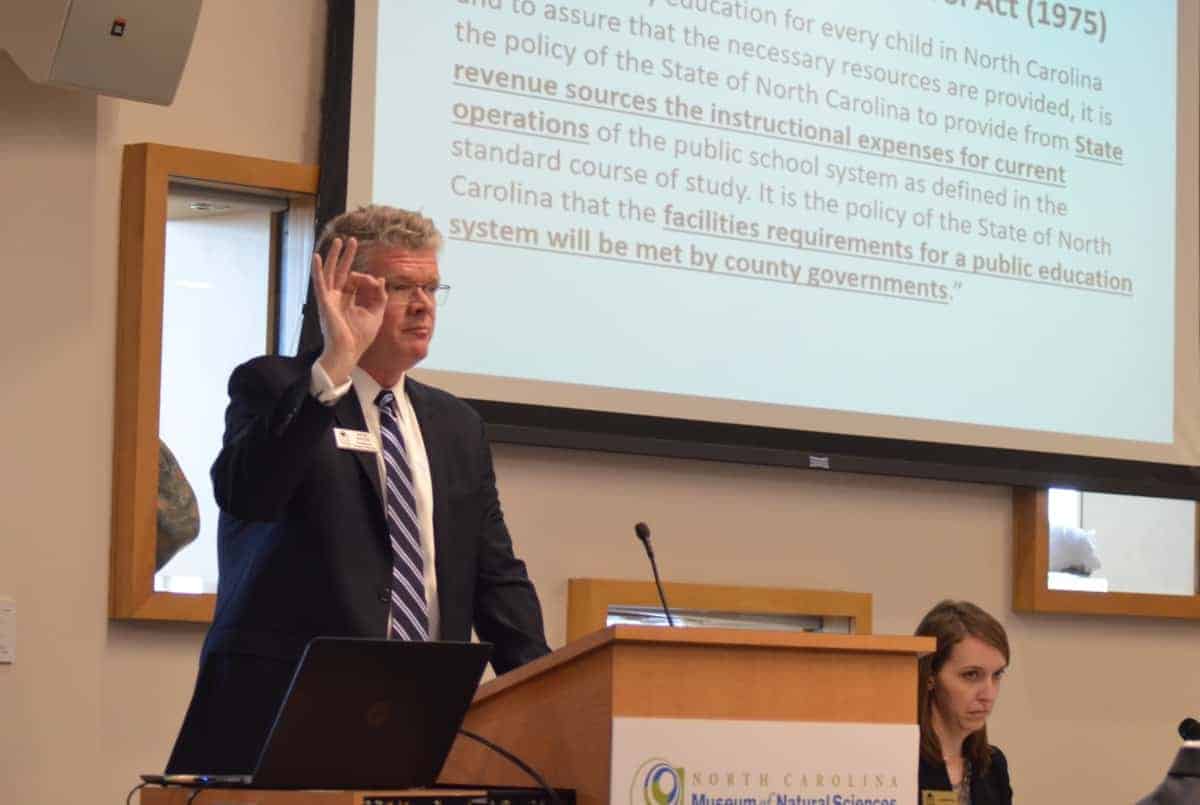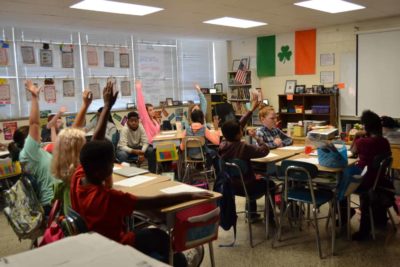A study by the Public School Forum of North Carolina found that the gap in local per-pupil spending between the 10 highest spending counties in the state and the 10 lowest spending is the largest its been since the Forum started tracking these numbers in 1987.
The Forum released its 2019 Local School Finance Study this morning, finding that the 10 highest spending counties spent an average of $3,200 per student while the 10 lowest only spent $755.
“Our low wealth counties simply cannot … compete with the Wake Counties and other counties around the state,” said Forum President and Executive Director Keith Poston during the presentation, which was held at the NC Museum of Natural Sciences.
The data presented by the Forum represents the numbers for the 2016-17 school year. The Forum looks in particular at local spending because that is an area where there can be huge discrepancies between districts. The bulk of the funding for North Carolina Public Schools comes from the state, but local money still covers about 24 percent of all public school spending.
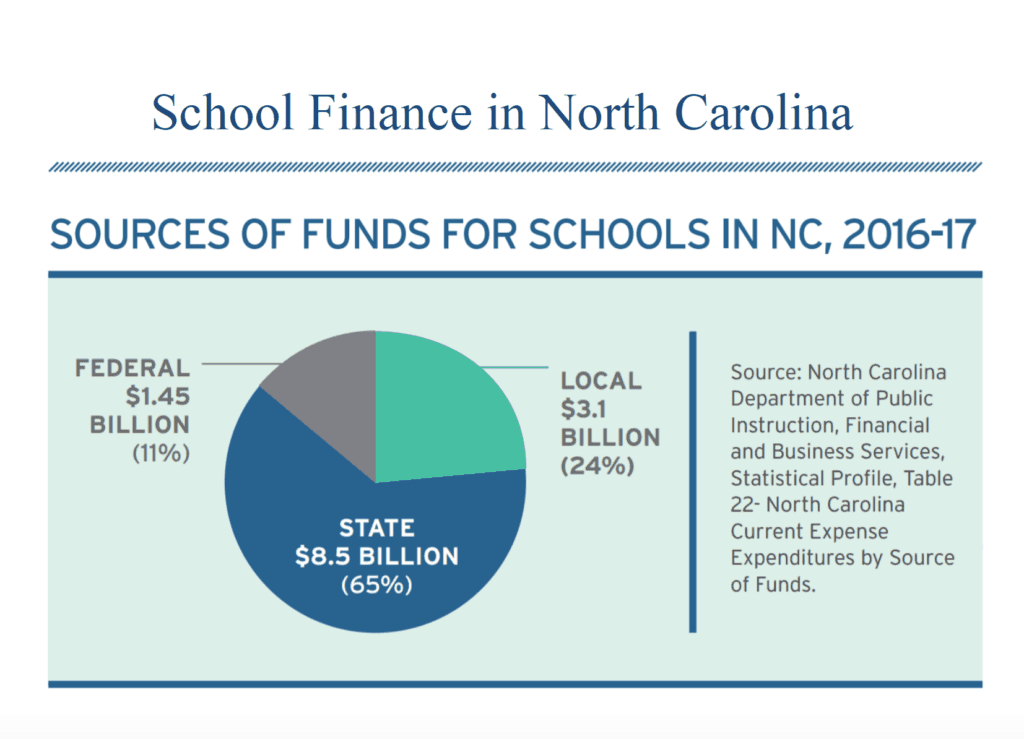

That money covers a variety of things, including school funding, supplemental salaries for teachers, and more.
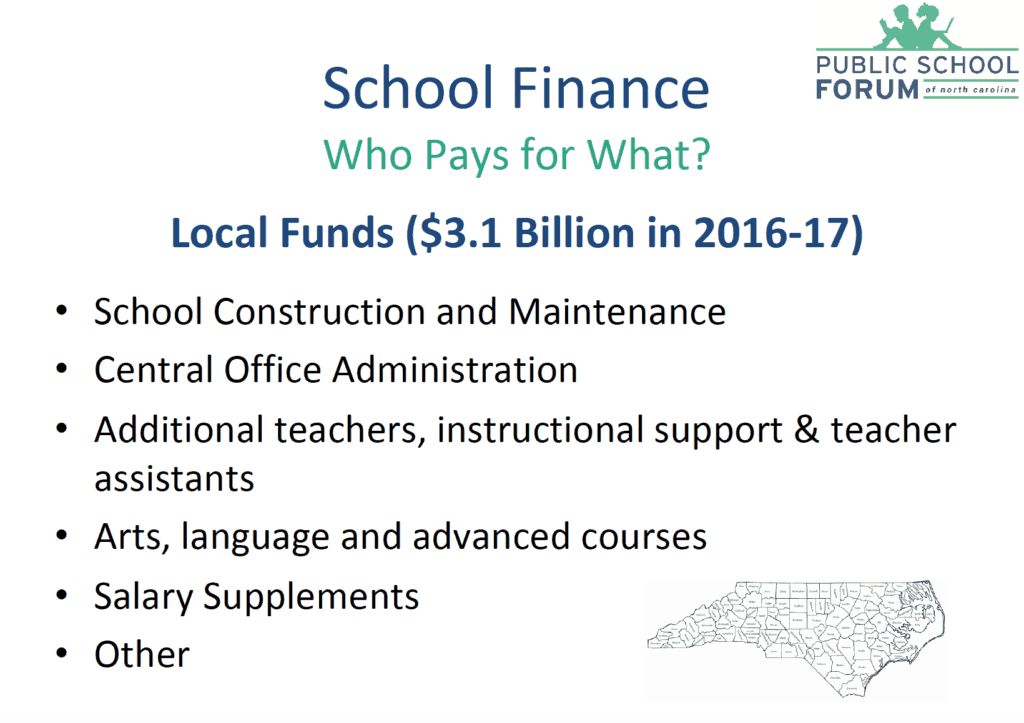

In a panel discussion with district superintendents and chief financial officers after the presentation, the subject of salary supplements came up. Because of the disparity between low-wealth and higher-wealth counties, the poor districts often find their teachers being siphoned off to better-off neighbors who can afford to pay more in salary by buttressing state funds with local money.
Greene County Superintendent Patrick Miller explained the disparity explicitly. Orange County, which is the biggest local spender, has a local supplement of about $5,025 per pupil while Greene is in the bottom 10 with $755. If you subtract one from the other, you get a disparity of about $4,270 per student. If you multiply that number by the number of students in Greene County — 2,950 — that disparity adds up to about $12.6 million.
However, Greene County does get some extra funding because it’s a small, low-wealth county. That extra funding amounts to about $3.5 million. Subtract that from $12.6 million, and the real gap between Orange County and Greene County is about $9.1 million. Miller explained that amount equals roughly 25 percent of the total budget he has to run his school system.
“You can see the gap in opportunities that my children have versus children in more affluent places,” he said.
Orange County actually spends more than 11 times the amount of the county that spends the least — Swain. And if you put together the seven counties at the bottom of the list, they still don’t spend as much together as Orange County does alone, according to the Forum presentation.
Kerry Crutchfield, former Chief Financial Officer of Winston-Salem/Forsyth County Schools, said that during his 38 years working in education, he was an advocate for more funding for all public schools, but he added that funding alone isn’t the answer.
“No matter what, it’s all about the choices you make with the dollars you receive,” he said.
Miller said the biggest challenges for his district when it comes to school funding involves the shrinking population of students Greene is serving.
“For me, I would say it’s declining enrollment, and when you partner that with more charter schools opening in our area and the class size mandate, it becomes very difficult,” he said.
He added that local supplements and funding for facilities are also a particular challenge.
Seth Prevette, chief finance officer for Wilkes County Schools, added support staff to that list.
“For us, counselors and social workers are a huge deal,” he said.
The study of local school finance is all occurring during a long period of time in which the share of state spending for public education has fallen from previous high percentages, according to Poston.
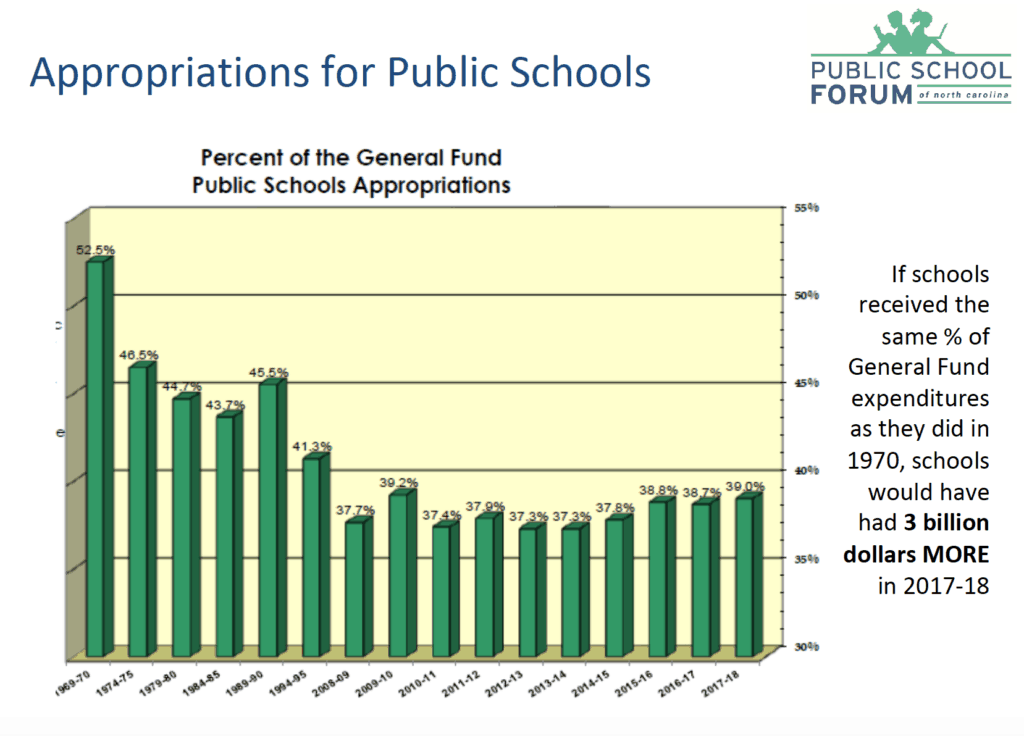

At the same time, there may never be a better climate in which to address the issue of school funding. Poston pointed out the work of the Joint Legislative Task Force on School Finance Reform, the Governor’s Commission on Access to Sound Basic Education, and independent consultant WestEd, which has been tasked by the judge in the long-running Leandro case with giving a report on North Carolina’s progress on “adequacy and equity in school finance.” That report is expected this year.
“There’s a lot of things that are coming together,” Poston said. “If we’re ever going to get it right, 2019 is a good time.”
The Forum included the following list of policy recommendations with its presentation.
